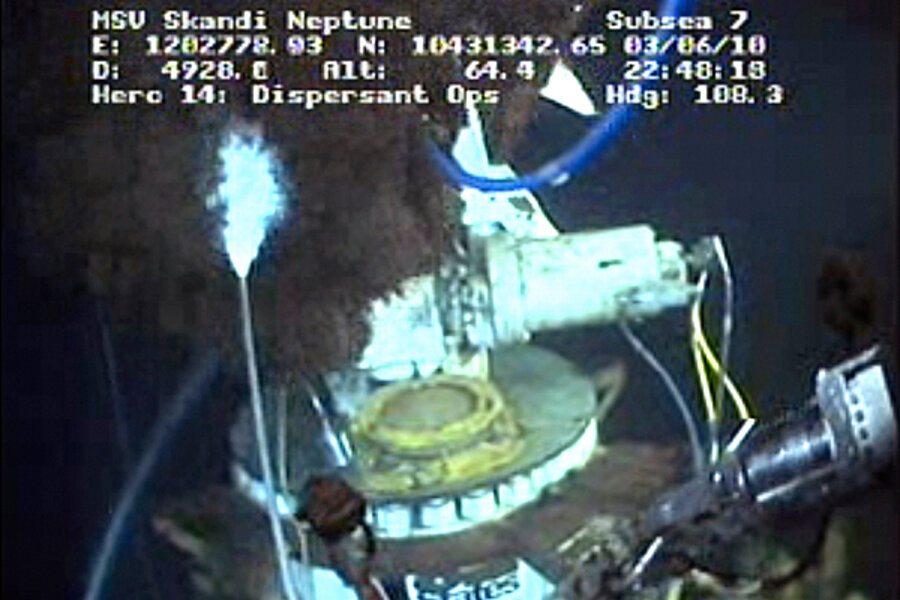'Top cap' on BP oil spill not tight enough as crude keeps spewing
Loading...
The plume of oil continuing to flow Friday morning at the bottom of the Gulf of Mexico signals that BP has not yet fully succeeded in sealing the source of the BP oil spill and siphoning the captured oil to a tanker on the surface – at least not yet.
BP engineers, with government scientists looking over their shoulders, on Wednesday cut a crumpled riser pipe left over from the sinking of the Deepwater Horizon rig on April 22. Subsea "disaster bots" failed to make a clean cut with a diamond-tipped saw on Thursday, jamming it instead into the pipe. After extracting the fine-cut saw, engineers opted for a pair of giant shears to lop the pipe. As bots later filmed the lowering of the "top cap" – a sort of giant garden hose seal – over the lower marine riser package at the top of the well, oil continued to spew from the scene.
More than 100 miles of marshland and beaches are already tarred, and a fishing area the size of Florida is closed in the Gulf.
IN PICTURES: Louisiana oil spill
In a press conference on Thursday, President Obama's point man, Coast Guard Adm. Thad Allen, said the jagged shear cut could undermine the effectiveness of the "top cap," because the seal may not be able to fit smoothly. That seemed to be the case early Friday morning, according to the BP "spillcam," as a plume of oil and gas burst from the side of the top cap and a "dispersant ops" sub injected a kerosene dispersant into the plume via a long rod.
Allen is expected to update the situation Friday morning, perhaps giving an estimate of the current flow rate of the geyser and indicating whether BP has a plan to further restrict it as the operation moves forward.
Doug Suttles, BP's chief operating officer, told the CBS "Early Show" that the company hopes to capture 90 percent of the escaping oil. "Of course what we have to do is work through the next 24 or 48 hours to optimize that," Mr. Suttles said. "We want to stop this oil from spilling to the sea."
BP has said its best chance to completely kill the well is to drill a relief well to intersect with the existing well, into which cement can be poured to cap the runaway well. Two such relief wells are already being drilled, but that work won't be completed until August at the earliest, Christmas at the latest, scientists estimate.
The total amount of oil that has spewed from the well is now into the tens of millions of gallons, perhaps twice the amount that leaked when the Exxon Valdez hit ground in Prince William Sound in 1989. It's by most accounts the worst environmental disaster in US history.
The leaking oil from the top cap is the latest in a string of "If it can go wrong, it will" events in the six-week effort to kill the Macondo well 5,000 feet below the Gulf. President Obama said Thursday on CNN"s "Larry King Live" that the accident happened "because someone didn't think through the consequences of their actions."
IN PICTURES: Louisiana oil spill
Related:





